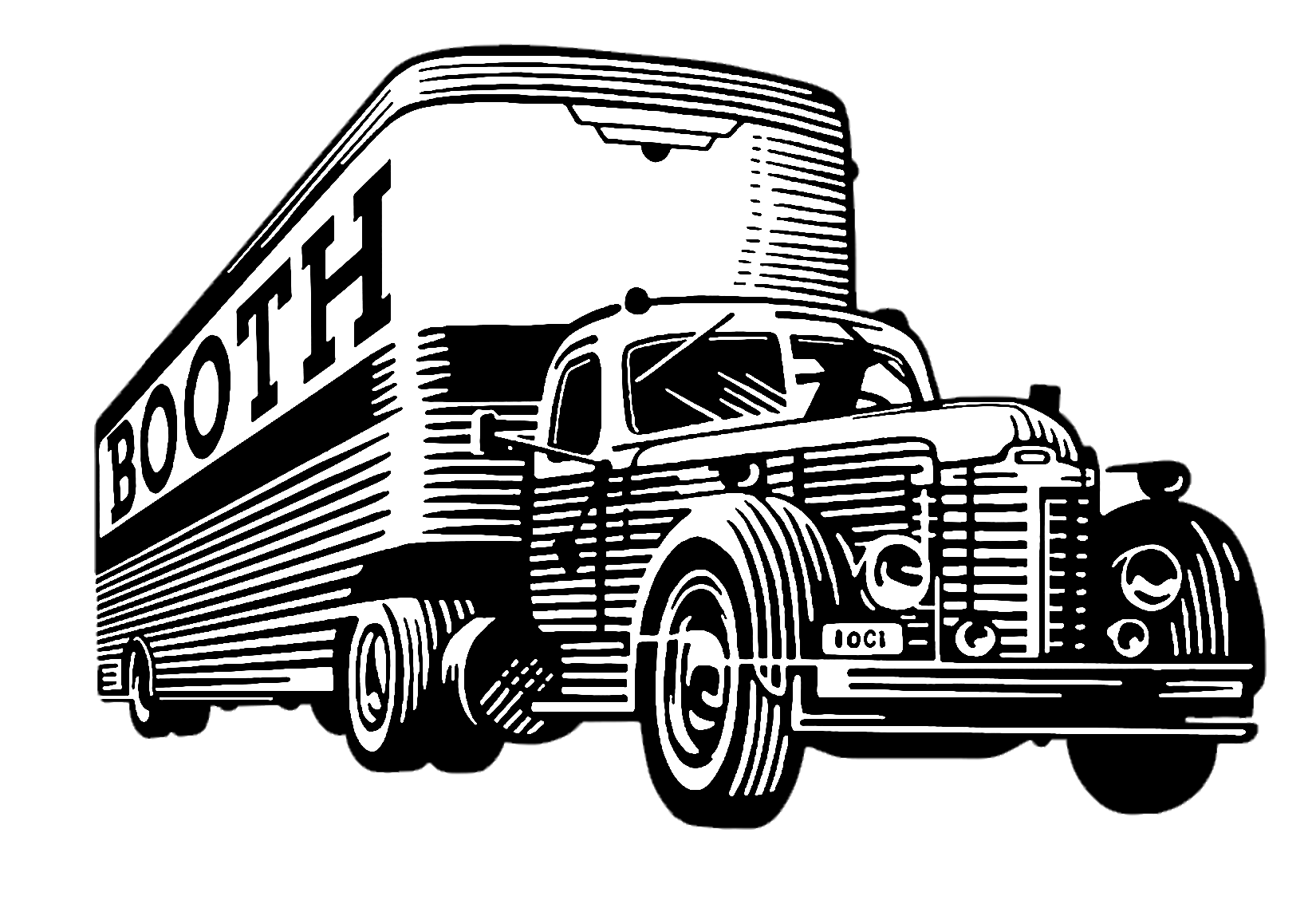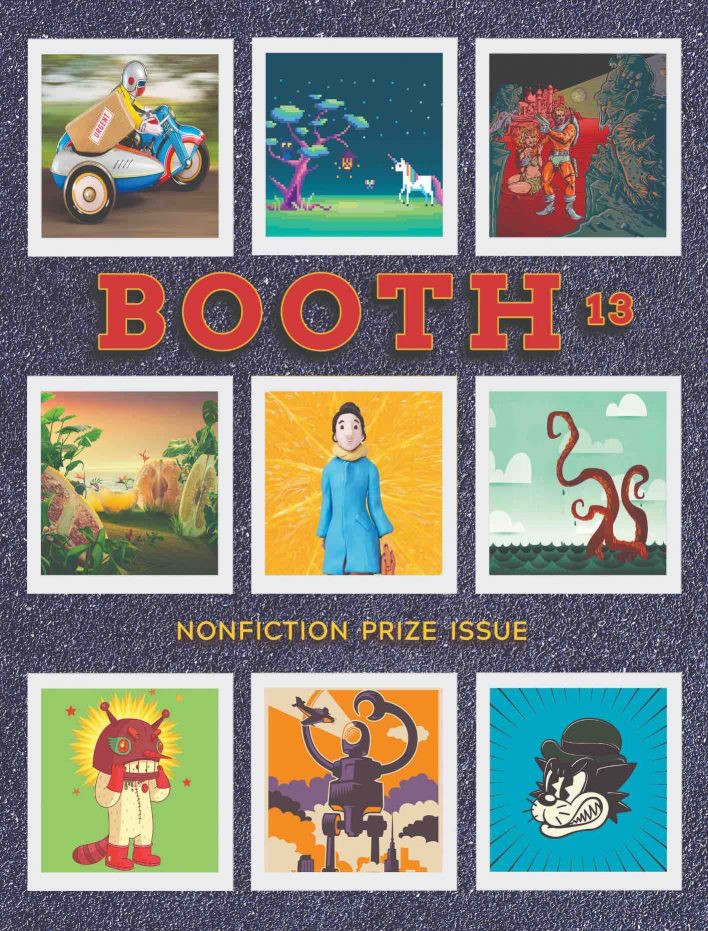From the Archives: We originally published this selection from the Winesburg, Indiana, project in Booth #2. This is the first time this work has appeared online.
I am not the first French writer to venture into the heart of the American interior. It was de Tocqueville, an inspector of prisons, who became distracted by the American character, finding at its heart a stability for the time, crafted by an obsession with equality and its jettisoning of rank, title, primogeniture, and the other trappings of the aristocratic landed elites. Beneath such skins, in other words, were other words. Take this “sandwich” for instance. It is an amalgam of the “raw” and the “cooked.” A sign for both the great leavened leveling flatness of the culture, nurtured on a denuded glacial plain, and its assertion of its “ness-ness” (it is known as “John’s [after the proprietor of the bistro] Awful, Awful,” a diminution of “Awful Big, Awful Good”). It is considered here to hold the highest rank in the hierarchy of “sandwiches,” said to be “the sandwich’s sandwich” in the same way one can be “a writer’s writer.” This is an application of democracy, after all, at once stratified but also (in its “bunned” variant) equilateral in its expression of difference and conformity. “Le pain,” the “bun,” is the architectural “quotation” of the dome (the English “pan” a verbal and visual pun as well as the literally vexed convex(ed) structure of the bun’s upper segment), the vaulted space that (pantheistically) arches over all uniformly and simultaneously. Elections are held for such sandwiches, as I am told by the “waitress,” and, here, in an enabling parasitic text attached to the menu, I discover that this particular “breaded” pork (tender)loin has (on several occasions) garnered the award as “best” in the “fair(s)” of several Midwestern states. Significant is that this meat puck be peened flat first to within an inch of its life, its footprint allowed to expand (before the application of its “breading” [that is to say, the meat is sandwiched by its own dermis of adhesive dough before said sandwich is sandwiched by the aforementioned sandwiching conventionally yeasted bun]) beyond the circular boundaries of the “bun” and beyond (and in its continuous beatings and poundings [known locally as “tenderization”]) in all directions, expand into a slim smear, a skid of flesh, even beyond the limits (and this is crucial [in the sense of “crossed”]) of the ceramic “plate” or “platter” that frames the whole meat delivery device’s delivery device. The massive flatness of the (tendered)loin is made even more evident by the rigorously induced rigor of the deep (emphasis mine) fat frying of the dead (though still elastic and recently stretched) flesh into the consistency of plied wood. The now encrusted cutlet is meant to expand (theoretically) horizontally beyond the surrounding event horizon of the plate and, eventually, the place. As I unhinge the “bun” to “dress” the sandwich with additional limpid veneers of a single lettuce leaf, a thin slice of pickle, and a squeeze-bottled skim of yellow-washed paste of mustard, I realize that the compacted (tenacious)loin is a kind of mirror (mirrored), reflecting not me so much as the surface of “me” (“Derrida”) or, even more exact, the (tentative)loin is a kind of anti-mirror mirror (mirror), not reflecting so much as absorbing light into the striations of its now heat-induced, chemically altered coatings, not a skin so much as the scrim that adheres to skin (a scum on the smooth surface of a pond that, in its flatness [both in the dimensional and optical calibrations], argues against even the concept of “depth”), a skin’s skin skinned. The “sandwich” (itself) is constructed of (empty) “words,” (“empty”) calories wrapped in the “whiteness” (the absence of color) of white bread. The “self” sandwiched as “sandwich.” Not a “prison” of walls (walls) but of floors “sandwiched” together. The sign “I” and the signifier for “I” (the “‘I’”) collapse—the serifed capital on the top pancaking upon the serif at the foot. The middle (stuffing) compressed (ground to grout), the whole thing reduced to a line, an “under” line, underlined, a line the thickness of this postal card, the depth of this stamp (the stamp’s intaglio image [of an American author] made of etched and stippled lines), the slick spit of the lick of my tongue positioned between the stamp (as in “to press down”) and the card with its inscribed (and inscription of) surface, of place, with its (future) postmark a tattoo (to be) absorbed into the (skimmed) skin.



